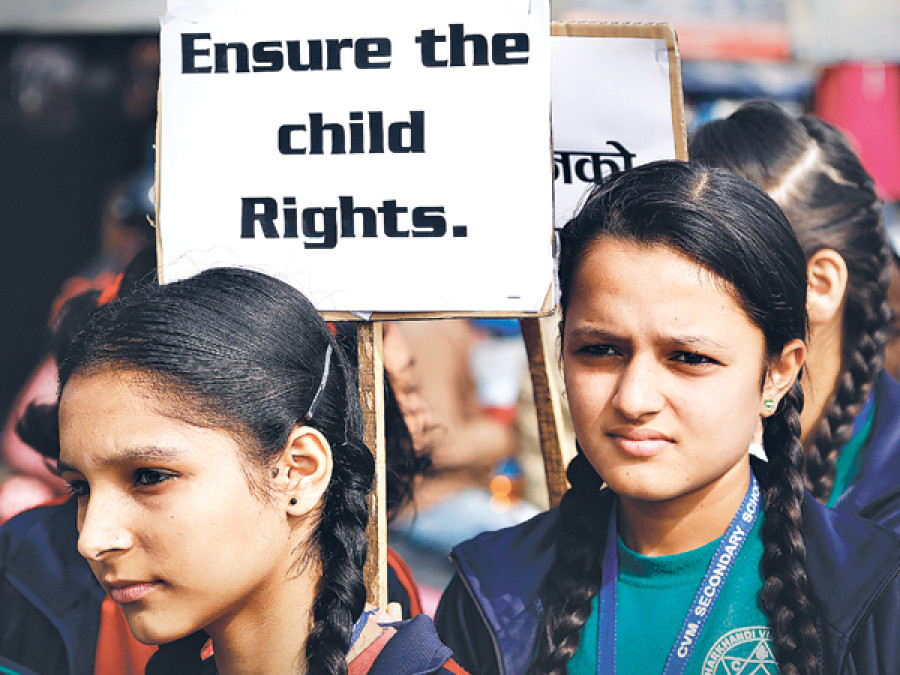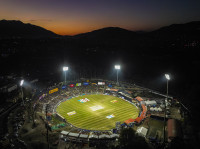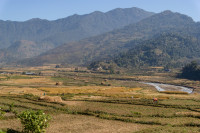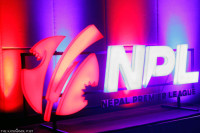Opinion
Young minds
Involvement of children in recent political protests does not qualify as the exercise of their right to participation
Tomoo Hozumi
Thousands of young school children in Kathmandu marched with adult demonstrators on November 27, to form a 27-km long human chain, carrying placards with messages on their right to education and calls to end the disruption of supplies across the border. Three days later, a similar human chain was formed in several Tarai districts, again involving children with placards with messages supporting the protests in these districts. These are very prominent but only few of the many more examples of the involvement of children in political rallies over the last several months in Nepal. Regardless of the content of these messages, can they be considered as an exercise of children’s right to participation as defined in the Convention on the Rights of the Child?
Convention on the Rights of the Child
The Convention on the Rights of the Child (CRC) is an international treaty that recognises the individual human rights of children, defined as persons up to the age of 18 years. Virtually all the countries in the world including Nepal have ratified it. The CRC covers the four broad categories of child rights: survival, development, protection and participation.
While children’s rights to survival, development and protection could be understood more intuitively and easily, the right to participation (referred to as ‘children’s right to be heard’ in Article 12 of the CRC) has certain conditions that need to be clearly understood and strictly adhered to in order to differentiate the concerned actions from the ‘use of children’. They include the following.
Expressing one’s views or not must be a voluntary choice of the child, not an obligation. For the right to participation to be genuine, children should never be coerced into expressing views against their wishes. They should also be informed that they can cease their involvement in the concerned activities at any stage. Children must also be provided with full, diversity-sensitive and age-appropriate information about the exercise of this right—its scope, purpose
and potential impact—for them to make their own decision on whether and how to exercise it.
Children should be able to express their own views—and not the views of others—freely without being subject to manipulation, undue influence or pressure.
The views of the child need to be given due weight in accordance with the age and maturity of the child. ‘Maturity’ refers to the ability to understand and assess the implications of a particular matter and express one’s views on issues in a reasonable and independent manner.
In certain situations, expression of views may involve risks. In this regard, adults have a very important and special responsibility towards children and must take every precaution not to expose them to the risks of violence, exploitation or any other negative consequence of their participation.
Tokenistic approaches that do not meet the above-mentioned conditions and limit children’s free expression of views must be avoided. The UN Committee on the Rights of the Child, in its General Comment on children’s Rights to be Heard in 2009, highlighted that “adult manipulation of children, placing children in situations where they are told what they can say, or exposing children to risk of harm through participation are not ethical practices and cannot be understood as implementing Article 12.”
Stop the use of children
While the complete information on the exercises that took place in both Kathmandu and the Tarai is not available, there is enough ground to believe that they did not fully meet the above-mentioned conditions for the exercise of children’s right to be heard or right to participation. Regardless of the intentions behind it, they will be considered more of the use of children for political and other purposes and not genuine child participation. This is something that virtually all the political and education-related organisations in the country denounced and promised to stop many times in the past by signing various documents related to ‘Schools as Zone of Peace’ and ‘Children as Zone of Peace’. Yet, such practices continue till date. In this regard, two things need to be seriously considered by all those who are concerned with these activities and Nepali society at large. First, if this practice continues, there will be no end to the use of children in the country. It can escalate into activities which are even more dangerous for both children themselves and the society. Secondly, they can increase the risk of the current situation being translated into inter-generational transmission of social schism by influencing the adaptable but at the same time pliable minds of children. We believe this would the last thing everyone in Nepal would like to see. We need to act now to avoid it by fully complying with the principles and practices of ‘Schools as Zone of Peace’ and ‘Children as Zone of Peace’ on all sides.
Hozumi is the Representative of UNICEF Nepal




 8.12°C Kathmandu
8.12°C Kathmandu










